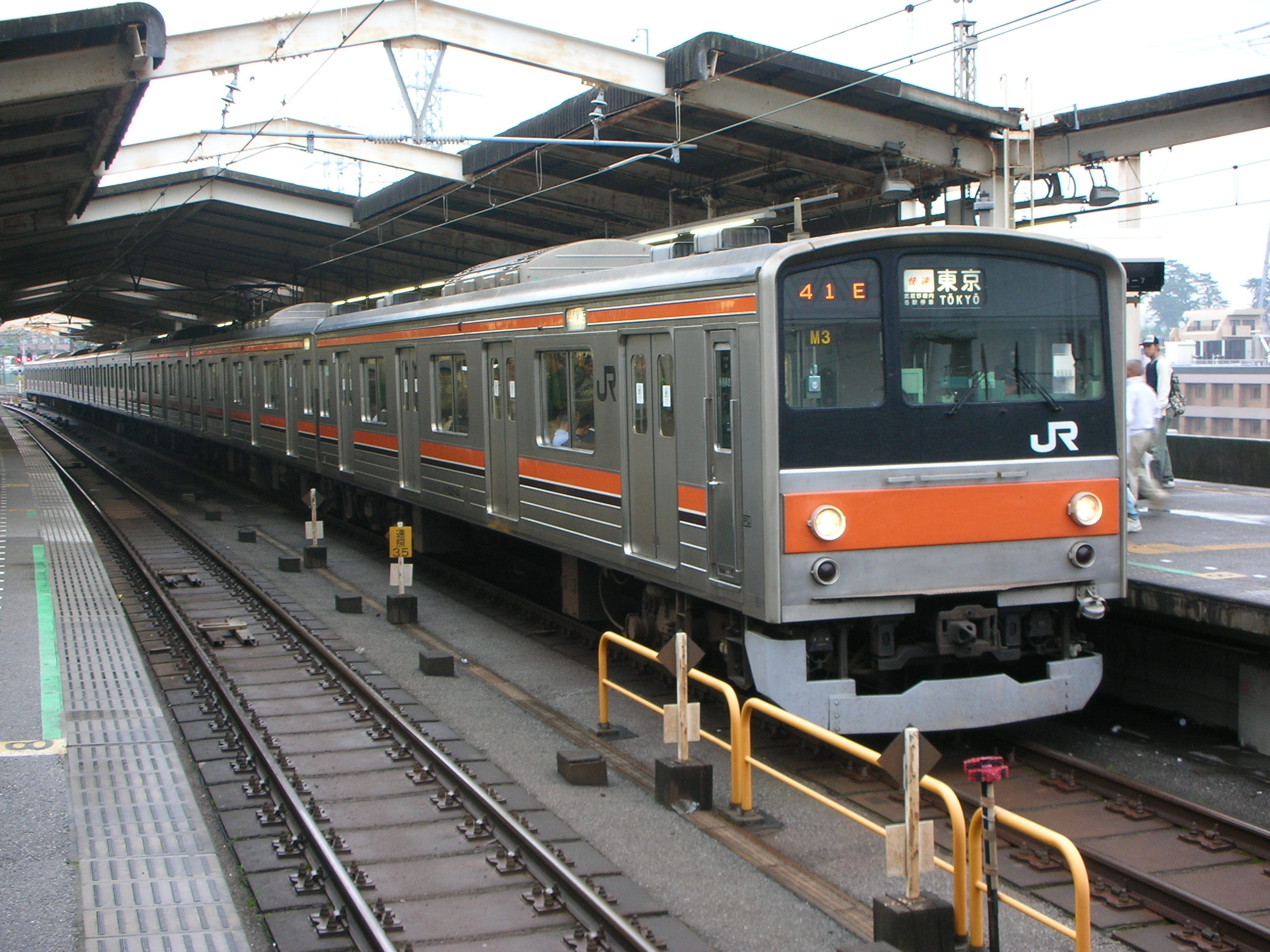- 205 series
imagesize = 240px
background =
caption = 205 series train at Nishi-Funabashi station on theMusashino Line
InService = 1985 - Present
Manufacturer =
Family =
Built =
Refurbishment =
Formation =
Operator = JR East, JR West
Depots =
LinesServed =
CarBody = Stainless steel
CarLength = 20 m
CarWidth =
CarHeight =
MaxSpeed = 100 km/h
Weight =
Capacity =
Acceleration =
Deceleration =
Traction =
Power =
Gauge = 1,067 mm
Voltage = 1,500 V DC overhead
Brakes =Regenerative brake , Electric commanding brake
SafetySystem =The nihongo|205 series|205系電車|ni-maru-go-kei / ni-hyaku-go-kei densha is an EMU developed by
Japanese National Railways . It was introduced in 1985, and is still in use on secondarycommuter rail services operated byEast Japan Railway Company (JR East) andWest Japan Railway Company (JR West).The 205 series is particularly notable for having been used in various configurations over a wide range of lines.
Lines on which 205 series trains operate
(in alphabetical order)
*Hachikō Line : 4-car 205-3000 series sets (x5) (from 2003) (former 205-0 sets modified by JR-East to form shorter trainsets for use in outer suburban services) (have passenger-operated door controls)
*Hanwa Line : 4-car 205-1000 (built by JR-West) series sets (from 1988) / 6- and 8-car 205-0 series sets (from 2006) (formerly operated on JR-West's Tokaido-Sanyo Local Service forming 7-car sets)
*Kawagoe Line : 4-car 205-3000 series sets (x5) (from 2003) (former 205-0 sets modified by JR-East to form shorter trainsets for use in outer suburban services) (have passenger-operated door controls) / 10-car 205-0 series sets (from 1989)
*Keiyō Line : 10-car 205-0 series sets (from 1990)
*Musashino Line : 8-car 205-0 series sets (some sets are powered by 205-5000 intermediate motor car units modified from 205-0 to utilize AC motor traction system)
*Nambu Line : 6-car 205-0 (x31) (including 4 sets with 205-1200 driving trailers which were converted from 205-0 intermediate trailers by JR-East)
* Nambu Branchline: 2-car 205-1000 series sets (x2) (from 2002) (former 205-0 sets modified by JR-East to form shorter trainsets for use in outer suburban services)
*Sagami Line : 4-car 205-500 series sets (x13) (from 1991) (built by JR-East for use in outer suburban services)
*Saikyō Line : 10-car 205-0 series sets (from 1989) (through service toRinkai Line )
*Senseki Line : 4-car 205-3100 series sets (from 2004) (former 205-0 sets modified by JR-East to form shorter trainsets for use in outer suburban services) (have passenger-operated door controls, toilets, and passenger seating which can be arranged in either 'transverse' or 'longitudinal')
*Tsurumi Line : 3-car 205-1100 series sets (from 2003) (former 205-0 sets modified by JR-East to form shorter trainsets for use in outer suburban services)
*Yokohama Line : 8-car 205-0 series sets (x27) (from 1988) (initially 7-car sets)Lines on which 205 series trains previously operated
*
Yamanote Line : 11-car 205-0 series sets (1985 - 2005) (initially 10-car sets)
*Chūō-Sōbu Line : 10-car 205-0 series sets (1989 - 2001)
*Keihin-Tōhoku Line : 10-car 205-0 series sets (1989 - 1996)
* Tokaido-Sanyō Local Service (Biwako, Kyoto, Kobe, Takarazuka lines): 7-car 205-0 series sets (1986 - 2006)External links
* [http://www.jreast.co.jp/train/local/205.html JR 205 series (Japanese)]
References
* 2006 JR Rolling Stock Handbook - Neko Publishing
* JR EMU Formations (Winter 2007) - JRR Publishing
Wikimedia Foundation. 2010.

